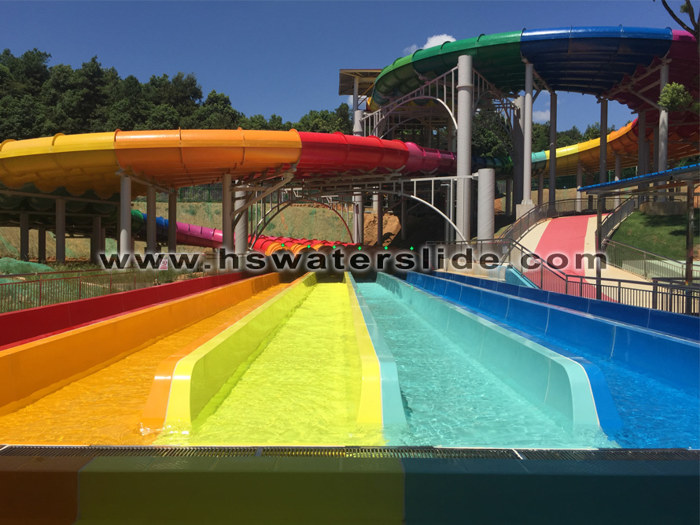When the autumn leaves begin to change color and the cold wind
ripples over the lazy river, some park operators from HAISAN water park design begin to consider closing
their gardens in cold weather and prepare to reopen their gardens in the coming
spring. As the owner of the park, your office safe may already contain a new
plan for a large amusement facility, which is likely to be higher, steeper,
faster or more unique than competitors'existing facilities. You've even
prepared a good name for it to attract a lot of tourists. Once the new project
opens, tourists will race to join the long queue, waiting for four or fifty
minutes, just for ten seconds of experience in recreational facilities.
However, simply adding more advanced recreational facilities does
not guarantee the improvement of the overall quality of the park. Please try to walk around your own
park. Do you mainly see tourists on roller coasters, young people playing in a
roaring surf pool, or parents chasing their children in the children's
playground? None of them. Most tourists are queuing up, rushing to the next
recreational event, rewarding themselves by sitting in a restaurant, taking a
short break on the beach, or hanging out in a gift shop. In short, most tourists
are not enjoying the eye-catching experience of one to five minutes on
expensive recreational facilities at the moment, but are scattered in auxiliary
spaces and facilities between these facilities.
So why are you still focusing 95% of your energy on the planning of
star facilities?
This is a challenge many park operators around the world face year
after year. Large-scale amusement facilities are good marketing projects, which
can attract tourists to the park. However, once tourists are in the park, their
actual ride time on the amusement facilities is very short. But the average
park operator has not spent enough time, energy and creativity to plan and
improve the experience beyond the amusement facilities. Major Park owners, such
as Disney and Universal Studios, have improved the waiting time of some
facilities into a more interesting experience, while leading companies in the
design industry of tourist attractions have repeatedly reiterated that the best
park starts with integrating the overall tourist experience into the planning,
thereby establishing their own unique brand. To achieve this goal, designers
and operators need to make much more effort than simply listing a list of
recreational facilities to be built.
First-class tourist attractions have three essential basic
components: path planning and design, landscape planning and design, and
income-generating opportunities design. These basic elements deserve to be
studied by park operators with the same effort as the amusement facilities themselves.
In this article, we will explore these three key elements of non-amusement
facilities and further analyze the two best cases with these elements. Hope to
take this opportunity, we can throw a brick to attract jade, help more parks in
the coming year when opening not only harvest the excitement of tourists
screaming at the amusement facilities, but also bring surprises to tourists
everywhere, to establish brand with the overall experience, attract repeat
visitors, and spread word of mouth.
Path Planning
The original function of the route is to guide tourists from point
A to point B. However, if strategic considerations and creativity are added to
the design, mature path planning can bring expectations and surprises to
tourists, and even promote their consumption desire. The first point is that within a
short distance of the entrance, the designer should create something that makes
the visitor feel "right" the first time. The sooner the node is, the
better. Once you enter the gate of the park, you'd better have a space where
visitors can't shut their mouths in surprise, and a space where children can
say "Cool!" Or "Mom, look here! Look there!" Places, not
huge and noisy playgrounds.
In Orlando Disney World, people need to go through the narrow space
at the bottom of the entrance building first. Then came the cheerful background
music and the bustling bustling main street. The Disney landmark at the end of
the street, Cinderella Castle, reminded people that this is the place where
dreams come true. In the ocean kingdom of Changlong, Zhuhai, the mission is to
accomplish the super-large LED display dome above the entrance tunnel, where
people are exposed. Surrounded by corals and aquatic plants, whale sharks and
fish swam across the sky, while giant blue whale sharks, which looked taller
than mountains in the distance, were crossing the water as if to enter another
hidden ocean in the sky; in Spain's Adventure Harbor Paradise, a clear central
lake, white sandy beaches, the Mediterranean Sea dotted with both sides.
Villages can also quickly help people complete the scene transition from
reality to outdoor Taoyuan; in Orlando Universal Studios Adventure Island
Paradise, people can see Harry Potter's magic-learning Hogwarts Castle in the
distance as soon as they enter the entrance corridor. All of this implies that
tourists are about to embark on a remarkable experience that will make people
look forward to the next journey.
After tourists enter the park, people generally can not directly
see the whole park, and path design can use this to consciously gradually
strengthen the expectations of tourists. Smart design of the path streamline
should make the small park appear larger, but also make a large number of
people seem to "disappear" in the winding paths and scattered
attractions. At the same time, we should also pay attention to helping tourists
maintain a sense of direction. Some high-rise landmarks scattered in different
districts can help visitors locate and direct them to the scenic spots we want
to show them. Walt Disney,
Disney's founder, coined the word "hot dog" for these large and small
landmarks that both attract tourists and help people locate. When Walt Disney
started building Los Angeles Disneyland in the 1950s, he often came home late.
When he gets home, he usually goes directly to the kitchen to see what he has
to eat. Sometimes he would catch a hot dog in the fridge to amuse his beloved
pet dog. Just take this hot dog and the dog will follow wherever Disney goes.
On the site, Disney used this interesting example to illustrate concisely and
concisely the importance and validity of Park signs to his park designers.
Smart path design also allows visitors to naturally and comfortably
arrive at every opportunity to generate income in the park, rather than
completely separating the shopping area from the amusement park, or hiding
restaurants or gift shops outside the main tourist streamline. If properly
designed, these deliberately arranged places of consumption will not appear
abrupt, they will be regarded as a natural part of the experience.
Many tourist attractions still have a lot of room for improvement
in path design. Some indoor parks only focus on the layout of intricate scenic
spots, path design is treated as a secondary element, only the concrete channel
around the scenic spots. The streamline designed in this way of thinking can
not guide tourists smoothly, nor can it further help to improve the overall
experience quality of tourists. There are also some paradise, when the
passenger flow increases, the response is only to widen the existing roads, or
occupy the landscape greening land, pouring more concrete "maze".
Tourists walk through it as if they were on the Los Angeles I5 interstate highway
during the rush hour, which deprives the park of its beauty. Therefore, in
planning and design, we should pay attention to using the tool of path planning
to guide passenger flow reasonably, so that tourists feel at ease in the park,
and provide better experience for tourists.

water park equipment from HAISAN water park design








.webp)


